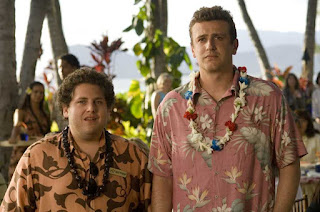Black Elk, Harney, & History
My eighth climb this year to the tallest peak in South Dakota was uneventful -- gorgeous weather, not a lot of foot traffic, and my second-best time for the year. However, five days before I climbed said peak, the US Board on Geographic Names officially announced that Harney Peak would now be known as Black Elk Peak.
William Harney was a Civil War general and participant in the Plains Indian Wars. And he was ... Well, not the nicest guy.
While historical context could soften some (*cringe*) of the Harney story, the benefit of hindsight also tells us that dang, some of our leaders in bygone eras weren't particularly great humans. (Keep in mind, I also live in an area with multiple places named after George Armstrong Custer.)
Meanwhile ... Black Elk was an Oglala Lakota holy man, born in 1863 in Wyoming and living in the sacred Black Hills area. At the age of nine, Black Elk had a great vision while on the peak where he was "standing on the highest mountain of them all, and round about beneath [him] was the whole hoop of the world." From then on, he followed in his family footsteps -- his father and uncles had been medicine men and he was taught his tribe's healing methods. He became renowned for his wisdom and ability.
Eventually, Black Elk took part in Buffalo Bill's Wild West Show, traveling to Europe to perform. He also participated in the fighting at Wounded Knee, chiefly as a medic (extracting and healing the wounded from the battle). When he was older, though, he became more of an educator, choosing to put on shows in the Black Hills to teach about Lakota culture rather than serve as an exhibition.
The book Black Elk Speaks was published in 1932 as an account of his life and of Lakota customs and spirituality. It's still in print and is a fascinating source for those who are curious.
These are the two men at the heart of the naming issue -- one a white man not from these parts, the other a local Lakota man. One known more for the deaths for which he was responsible -- and the other known for healing and educating.
Perhaps the conflict is a bit more clear.
The argument to rename the peak has returned more than once over the years, almost always opposed by the state government. This time, however, it went on to the federal board -- and as it happens, the decision was unanimous in favor of the change.
The opposition continues and isn't exactly surprising. As long as South Dakota has been a legal entity, the peak has been Harney Peak. Besides that, there is more recent history surrounding the peak's lookout tower, from its construction in the 1930s to the inurnment of Valentine McGillycuddy, a comparative friend to the Lakota and the first recorded white man to climb the peak. Futhermore, in 1980, the land surrounding the peak was named the Black Elk Wilderness Area -- an act that seems like a compromise, of sorts. The peak's name has been untouched through it all and as such is ingrained as part of the lexicon of the area.
And, well, there are a lot of things that would have to change. Maps and trail signs and road signs. A lot.
Still, after a bit more reading, I have to admit ... I'm all for it. It's not just because Harney was, well, kind of a jerk. (Even with context, I can't find a lot in his favor.) It's also because this is a chance for us to embrace our own history, to honor one of our own historical figures. It's a chance to educate people on the culture and history of the Black Hills.
Is it the easiest answer? No. Is it the best answer? ... It could be.
 |
| Won't stop me from taking the same picture each month... |
William Harney was a Civil War general and participant in the Plains Indian Wars. And he was ... Well, not the nicest guy.
- In 1834, he was accused of whipping a female slave (Hannah) to death and he fled the county. As was generally the case for male slaveowners in Missouri at the time, he was eventually acquitted, but the record is there. [I find that I had to use the phrase "as was generally the case" absolutely obnoxious. Seriously, how did it escape notice for so long that human ownership was not a good idea? I hope at some point someone looked around at the world and thought, "I wonder if my great-grandchildren might look at this a bit differently..."]
- He led troops into the 1855 Battle of Ash Hollow, a retaliatory battle that was one of the opening fights in the Plains Indian Wars, where he earned the name "Woman Killer" from the Lakota.
- His service in the Civil War was limited by riots in St. Louis and his own status as a Tennessee-born man. While on his way to DC to plan a course of action with other generals, he was even captured by Confederates and offered a command by Robert E. Lee. He declined and continued to DC ... but retired in 1863 when it was apparent that he would not end up with a field post. [Oy. Politics. Missouri was a border state, after all, and he was originally from a Confederate state ... That had to have been interesting.]
- He would later command troops in the Black Hills region in the 1870s ... which is notably when treaties said white folks weren't supposed to be in the area. When the peak was first named by white men in 1855, it was an officer under Harney that decided to name it for his commander.
While historical context could soften some (*cringe*) of the Harney story, the benefit of hindsight also tells us that dang, some of our leaders in bygone eras weren't particularly great humans. (Keep in mind, I also live in an area with multiple places named after George Armstrong Custer.)
Meanwhile ... Black Elk was an Oglala Lakota holy man, born in 1863 in Wyoming and living in the sacred Black Hills area. At the age of nine, Black Elk had a great vision while on the peak where he was "standing on the highest mountain of them all, and round about beneath [him] was the whole hoop of the world." From then on, he followed in his family footsteps -- his father and uncles had been medicine men and he was taught his tribe's healing methods. He became renowned for his wisdom and ability.
Eventually, Black Elk took part in Buffalo Bill's Wild West Show, traveling to Europe to perform. He also participated in the fighting at Wounded Knee, chiefly as a medic (extracting and healing the wounded from the battle). When he was older, though, he became more of an educator, choosing to put on shows in the Black Hills to teach about Lakota culture rather than serve as an exhibition.
The book Black Elk Speaks was published in 1932 as an account of his life and of Lakota customs and spirituality. It's still in print and is a fascinating source for those who are curious.
These are the two men at the heart of the naming issue -- one a white man not from these parts, the other a local Lakota man. One known more for the deaths for which he was responsible -- and the other known for healing and educating.
Perhaps the conflict is a bit more clear.
The argument to rename the peak has returned more than once over the years, almost always opposed by the state government. This time, however, it went on to the federal board -- and as it happens, the decision was unanimous in favor of the change.
The opposition continues and isn't exactly surprising. As long as South Dakota has been a legal entity, the peak has been Harney Peak. Besides that, there is more recent history surrounding the peak's lookout tower, from its construction in the 1930s to the inurnment of Valentine McGillycuddy, a comparative friend to the Lakota and the first recorded white man to climb the peak. Futhermore, in 1980, the land surrounding the peak was named the Black Elk Wilderness Area -- an act that seems like a compromise, of sorts. The peak's name has been untouched through it all and as such is ingrained as part of the lexicon of the area.
And, well, there are a lot of things that would have to change. Maps and trail signs and road signs. A lot.
Still, after a bit more reading, I have to admit ... I'm all for it. It's not just because Harney was, well, kind of a jerk. (Even with context, I can't find a lot in his favor.) It's also because this is a chance for us to embrace our own history, to honor one of our own historical figures. It's a chance to educate people on the culture and history of the Black Hills.
Is it the easiest answer? No. Is it the best answer? ... It could be.


Comments